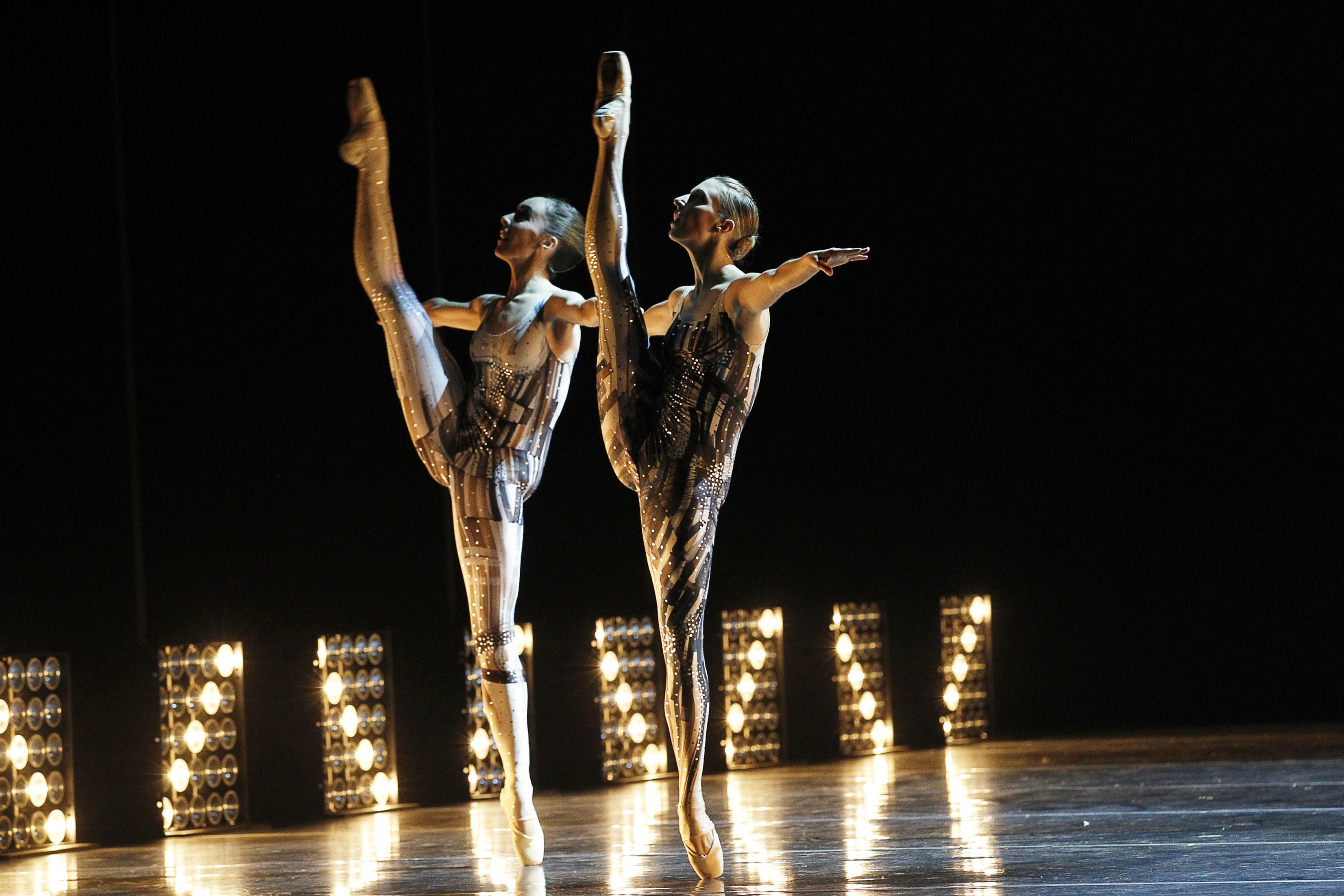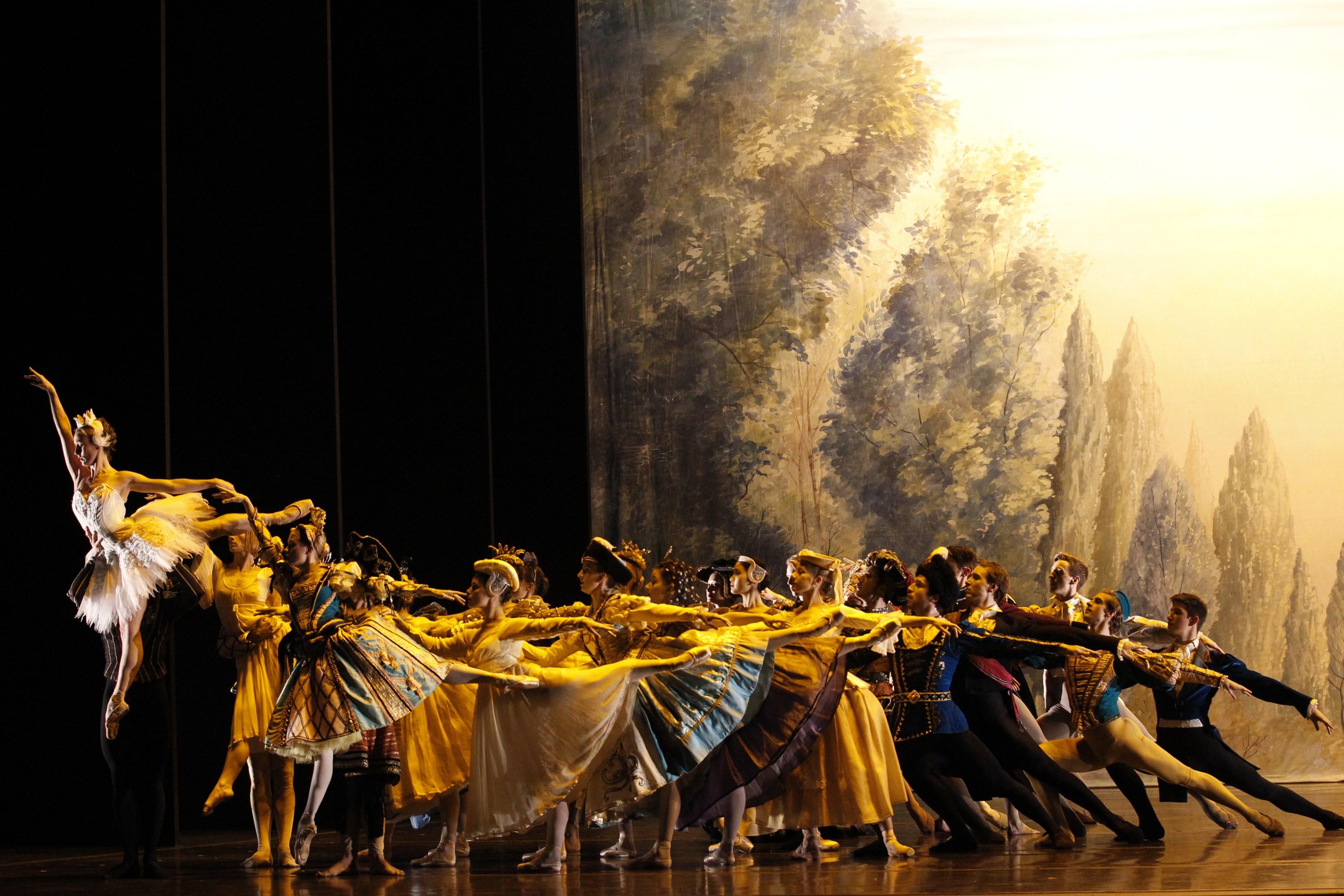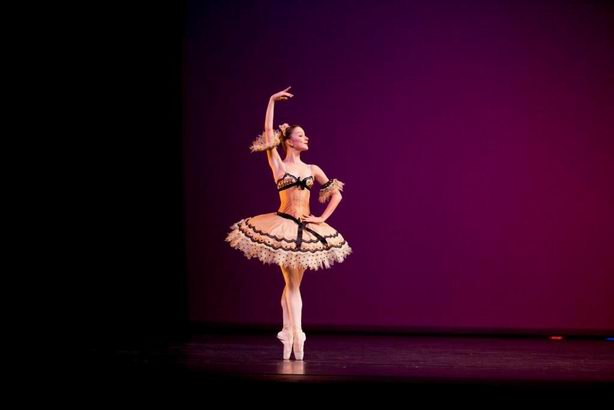This is an expanded version of a review written for The Canberra Times.
24 February 2012, State Theatre, Victorian Arts Centre, Melbourne
Infinity, the Australian Ballet’s first program in its 50th anniversary year, is a diverse and sometimes challenging evening of dance. But most of all it is thrilling experience to see the Australian Ballet putting itself out on a limb with three brand new works from three Australian choreographers: Graeme Murphy, Gideon Obarzanek and Stephen Page. All three works are danced to new scores by Australian composers and all three have new Australian designs. Definitely something to celebrate.
The show opens with the new work from Murphy, The narrative of nothing. To tell the truth, while there is a perfectly good explanation from Murphy for why this title was chosen—there’s no obvious narrative but the work may still be telling the audience something, I’d much rather dispense with titles that sound smart (with all due respects to Murphy). Untitled works just as well for me!
Murphy’s choreography often had a primeval feel as bodies twisted and curled around others. There were powerful performances from Lana Jones and Adam Bull, and I especially admired the sequence where Jones was partnered by several men who alternated between holding her aloft and letting her fall from side to side. Vintage Murphy really but Jones’ ability to hold her body in a perfect curve as she fell was breathtaking.

The supporting dancers deserve praise for their technical strength as they attacked the demanding choreography. Murphy has moved a step beyond his usual (always interesting) vocabulary and made a work that, in somewhat of a contradiction, asks the dancers to move with a kind of aggressive lyricism.
I didn’t read the program notes prior to watching this work so wasn’t aware in advance that the commissioned score, Fire Music by Brett Dean, was in response to the Victorian ‘Black Saturday’ bushfires of 2009. With the knowledge of what was behind Dean’s score, fire in some respects becomes the non-narrative. But the works stands without this knowledge and in fact I was pleased that I didn’t know in advance. The score sounded quite elemental—the thunder sheets certainly helped there—and, with some instruments positioned outside the pit, the sound was enveloping.
Jennifer Irwin’s body hugging costumes were decorated individually with black patterns, often swirling organically, and with what looked like silver studs or tiny mirrors. Depending on the lighting (by Damien Cooper) they changed from looking a little punk, to glowing in the dark, to looking slinky, and much more. Cooper’s design was uncompromising—a solo by Adam Bull performed pretty much on the spot in a strong downlight was another highlight. The design also included an onstage use of lighting rigs not normally on view to the audience, another technique that has often featured in works by Murphy. With the inclusion of a minimalist black space as a setting The narrative of nothing became an example of the very best of contemporary collaborative enterprises. It also looks back to some of Murphy’s strongest abstract works made for Sydney Dance Company—Piano sonata comes straight to mind.
Obarzanek’s piece also had a strange, or at least not very catchy title, There’s definitely a prince involved. It referred to his process of generating ideas and vocabulary for the work by asking a range of people about what they thought constitutes a ballet, and his subsequent deconstruction of the ballet Swan Lake. The work can be read on a number of levels. On the most simplistic it tells the story of Swan Lake, using the dancers as narrators, and focuses on the illogicality of the story. It relies on the dancers’ deadpan delivery of the text to raise laughter from the audience, and the various dancers who take on the role of narrator throughout the piece are more than adept. Unfortunately, even though they used a microphone, their voices were often inaudible above the crashing sounds of the orchestra playing Stefan Gregory’s fragmentation of Tchaikovsky’s familiar Swan Lake music.
On another level the work rips apart the traditional choreography of Swan Lake, and amusingly so, especially in the section based on the dance of the four little swans. It helps but is not essential if the audience is familiar with the traditional steps.
On yet another level the work can be seen as a comment on art asking the question of whether Swan Lake is indeed a work of art. Obarzanek has an acutely inquiring mind and his ability to force us to reconsider what we as a ballet audience might take for granted is powerful and actually quite respectful.
There’s definitely a prince involved uses dancers of the Australian Ballet augmented by dancers from Obarzanek’s company, Chunky Move. Australian Ballet principal Madeleine Eastoe showed her versatility as a performer and slotted beautifully into the varying demands associated with the role of a deconstructed Odette, the female lead. The few moments of classical movement—a fabulous grand jeté across the stage, and her ‘dying swan’ poses—did however make me yearn to see her dance a ‘real’ Swan Lake. Deconstruction is fine, entertaining and thought provoking, but the classic version transcends it all and it is that strength really that allows Obarzanek’s deconstruction to work so well.

The program closes with Page’s Warumuk—in the dark light with Bangarra Dance Theatre joining forces with the Australian Ballet. With its new score from David Page it presents an exploration of the myths associated with the night sky.
The Bangarra dancers performed with their usual, beautifully rehearsed ensemble work with particularly striking performances from Elma Kris and Waangenga Blanco representing Full Moon. Vivienne Wong, stunningly dressed by Jennifer Irwin in a lacy black outfit cut with a long ‘tail’ at the back, stood out as the Evening Star. For me Wong was the sole Australian Ballet dancer who was able to transcend her balletic training and blend into the Bangarra way of moving. This was a real feat as Bangarra has now consolidated its own very distinctive style and company dancers are performing with added assurance and expertise.
The one disappointment for me was Jacob Nash’s set design. To me it looked a little too much like a previous Bangarra commission, his set designs for ‘About’, part of the Belong program of 2011.
This program is the Australian Ballet in an extreme mood. I have nothing but praise for the courage of the company in taking on, and succeeding in a program that far surpasses anything they have done in recent years. It makes the company look at last as though it is a company with a desire to move ballet into the future.
Michelle Potter, 27 February 2012
Postscript: The Canberra Times review appeared on 17 March 2012. It is no longer available online.
